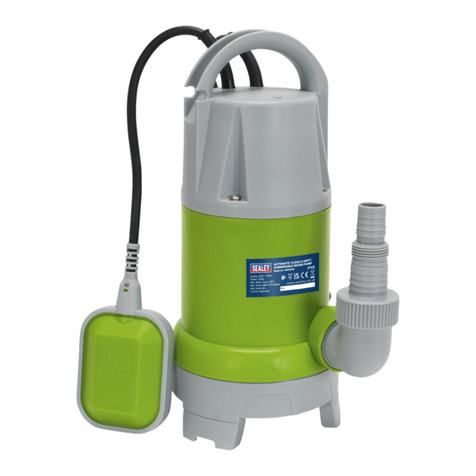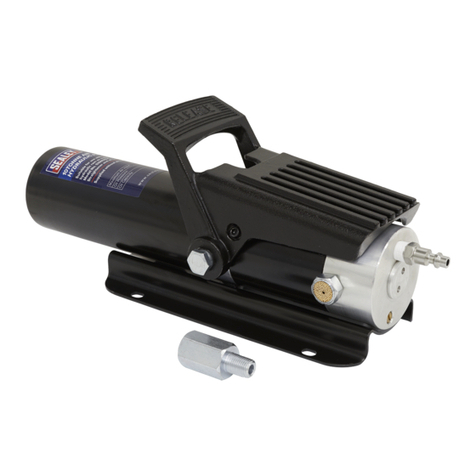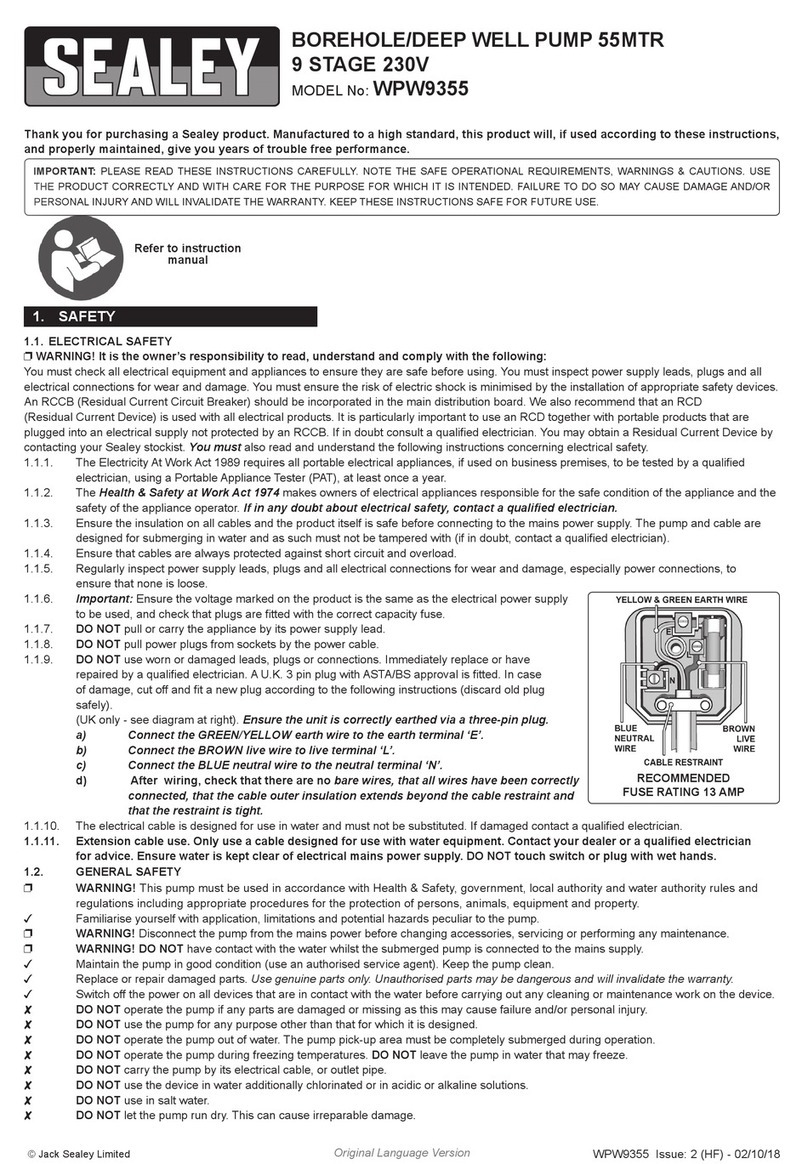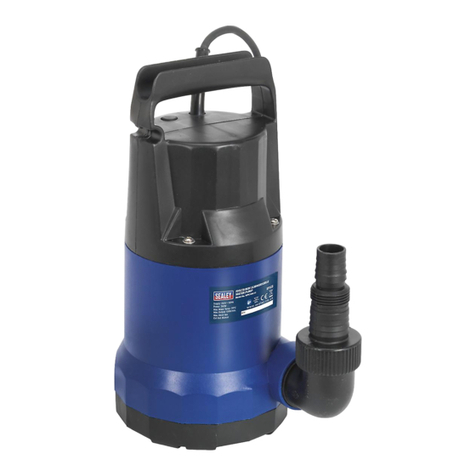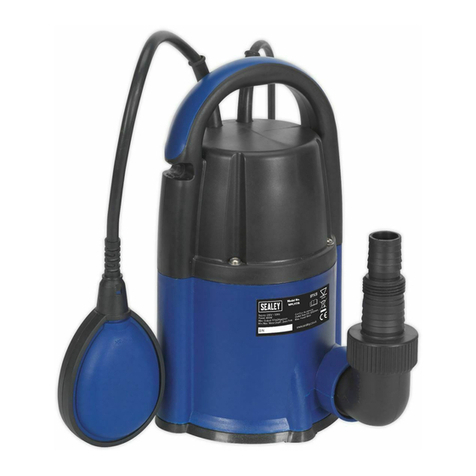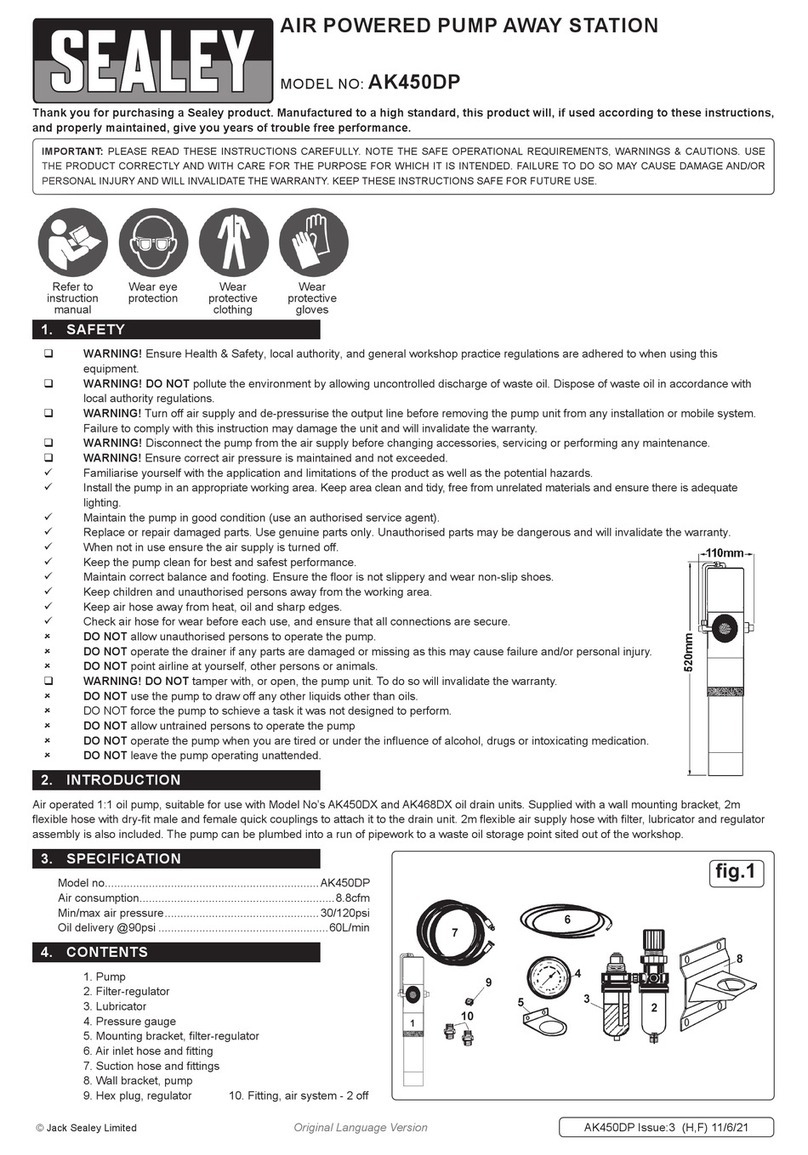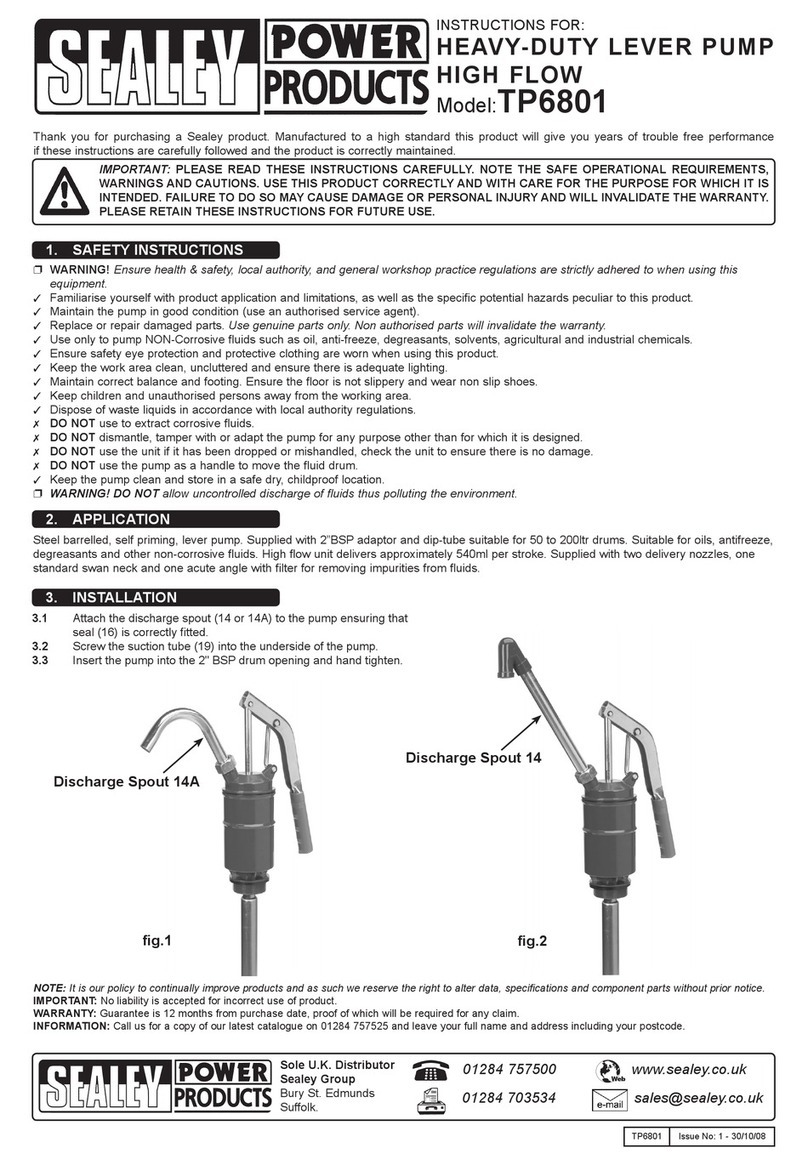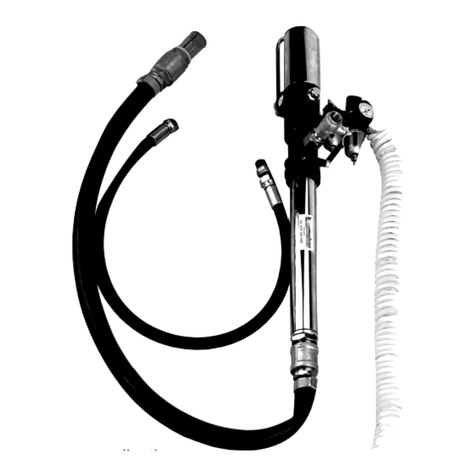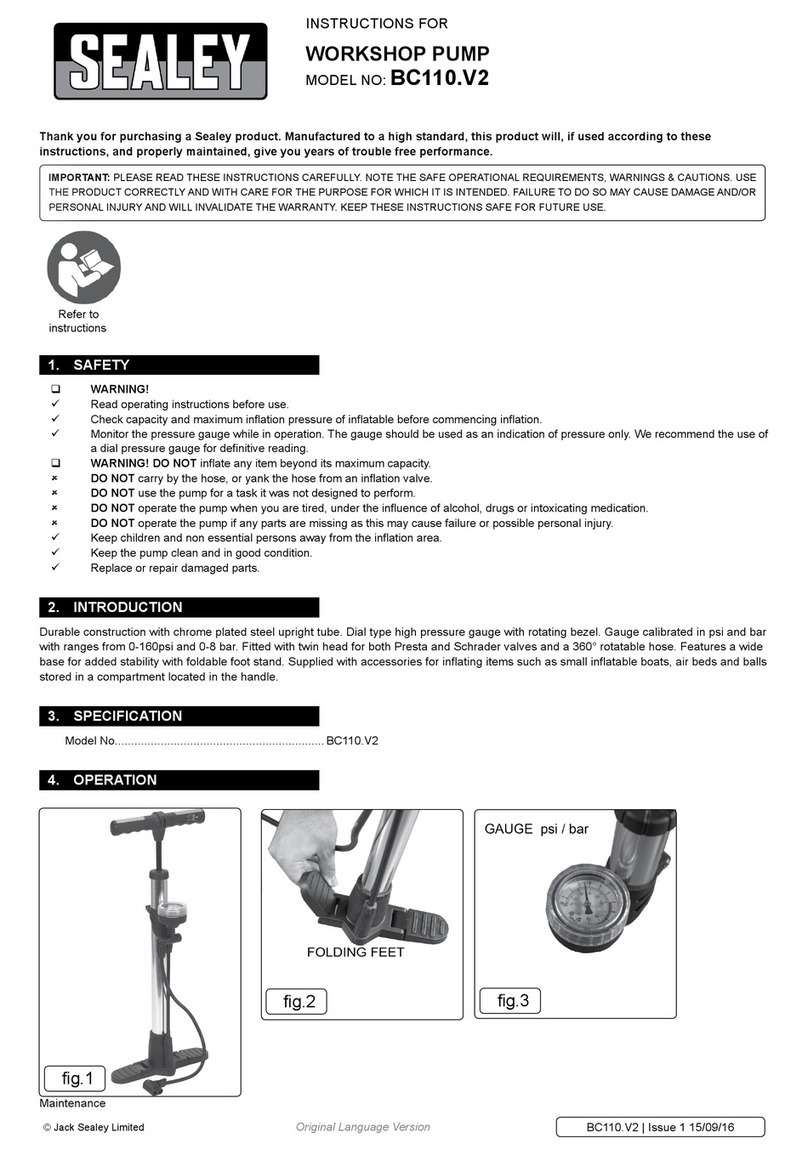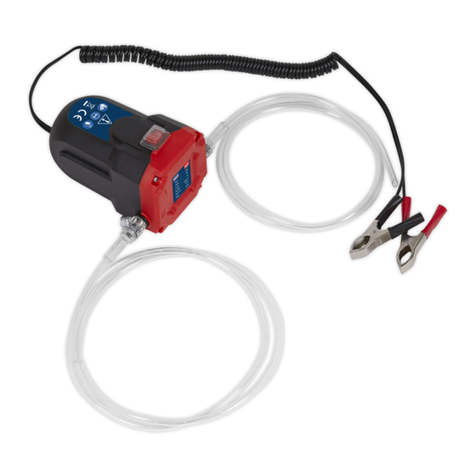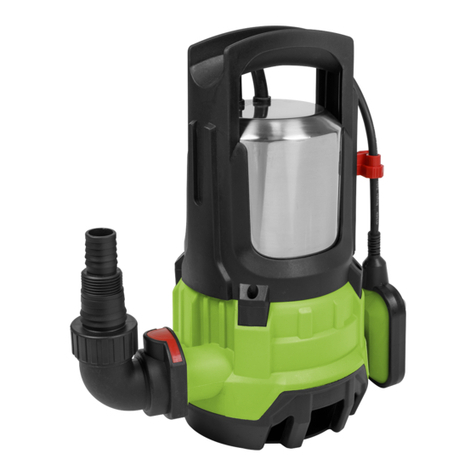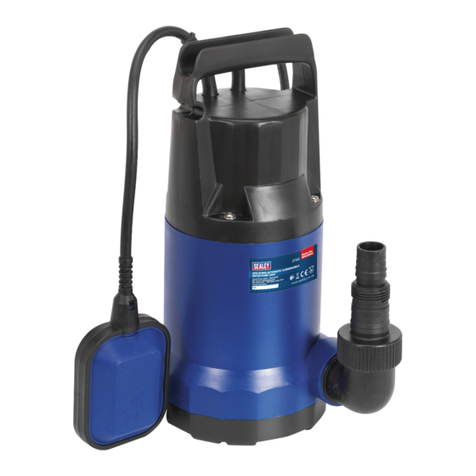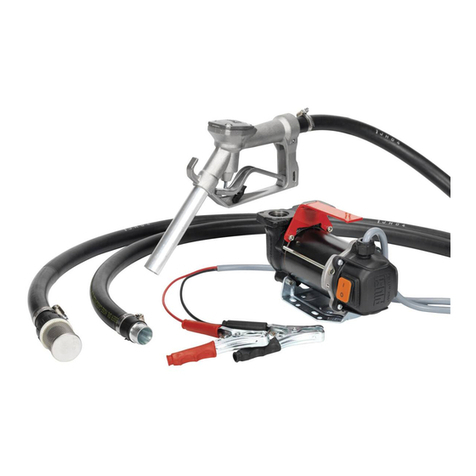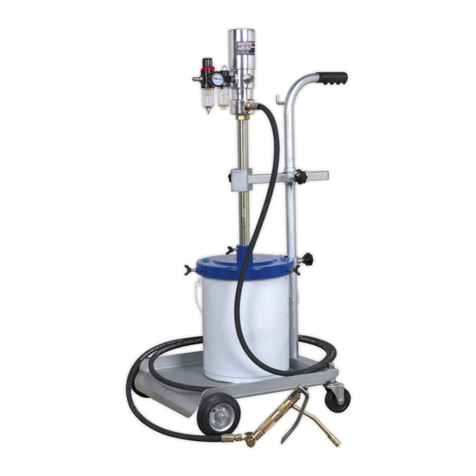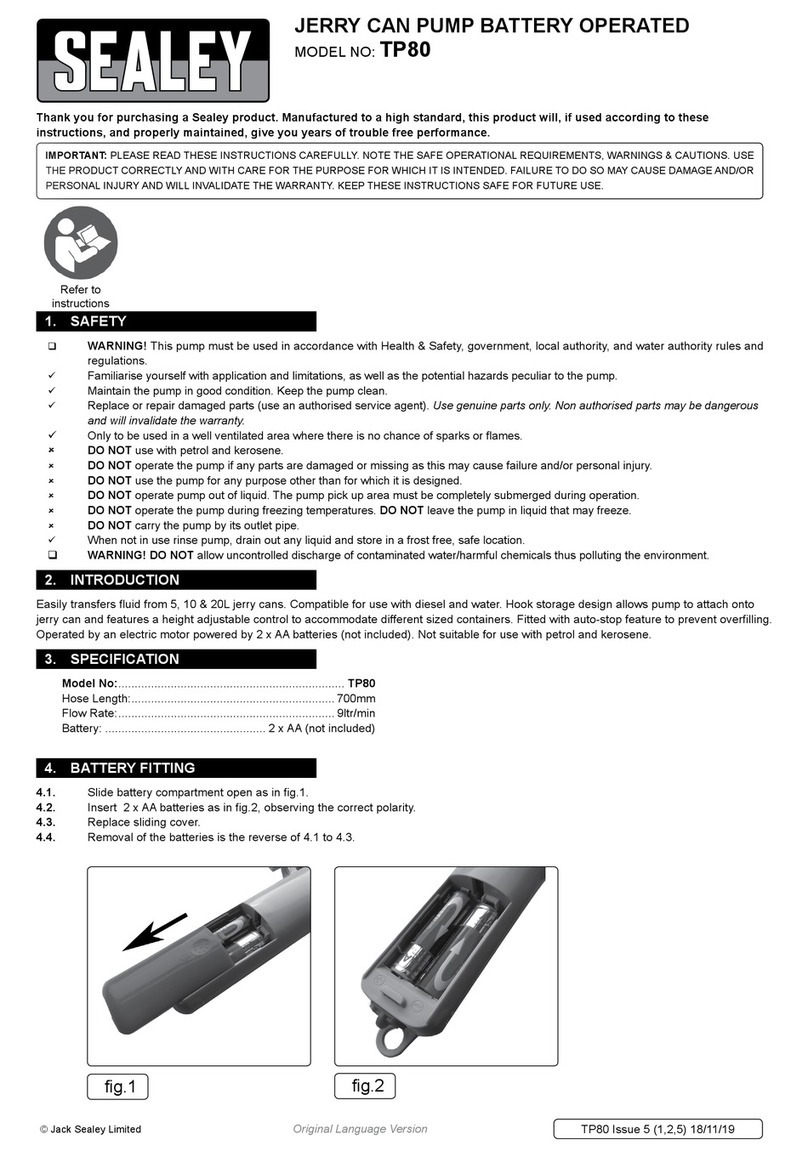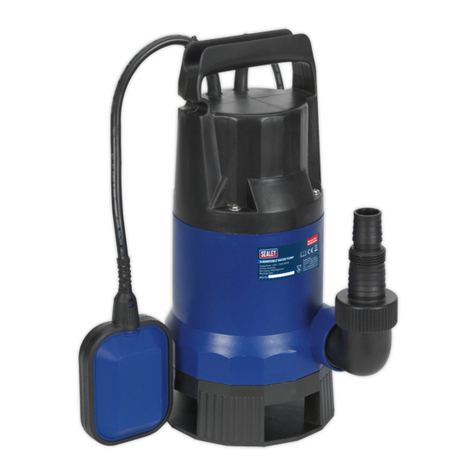
DIESEL TRANSFER PUMP
INSTRUCTIONS FOR MODEL NOS:
TP97,TP9724,TP97230
Thank you for purchasing a Sealey product. Manufactured to a high standard this product will, if used according to these instructions and
properly maintained, give you years of trouble free performance.
1. SAFETY INSTRUCTIONS
IMPORTANT: PLEASE READ THESE INSTRUCTIONS CAREFULLY. NOTE THE SAFE OPERATIONAL REQUIREMENTS, WARNINGS & CAUTIONS.
USE THE PRODUCT CORRECTLY AND WITH CARE FOR THE PURPOSE FOR WHICH IT IS INTENDED. FAILURE TO DO SO MAY CAUSE
DAMAGE AND/OR PERSONAL INJURY, AND WILL INVALIDATE THE WARRANTY. PLEASE KEEP INSTRUCTIONS SAFE FOR FUTURE USE.
1.1. ELECTRICAL SAFETY
WARNING! It is the responsibility of the owner and the operator to read, understand and comply with the following:
You must check all electrical products, before use, to ensure that they are safe. You must inspect power cables, plugs, sockets and any other
connectors for wear or damage. You must ensure that the risk of electric shock is minimised by the installation of appropriate safety devices. A
Residual Current Circuit Breaker (RCCB) should be incorporated in the main distribution board. We also recommend that a Residual Current
Device (RCD) is used. It is particularly important to use an RCD with portable products that are plugged into a supply which is not protected
by an RCCB. If in any doubt consult a qualified electrician. You may obtain a Residual Current Device by contacting your Sealey dealer.
You must also read and understand the following instructions concerning electrical safety.
1.1.1. The Electricity at Work Act 1989 requires all portable electrical appliances, if used on business premises, to be tested by a qualified
electrician, using a Portable Appliance Tester (PAT), at least once a year.
1.1.2. The Health & Safety at Work Act 1974 makes owners of electrical appliances responsible for the safe condition of those appliances
and the safety of the appliance operators. If in any doubt about electrical safety, contact a qualified electrician.
1.1.3. Ensure that the insulation on all cables and on the appliance is safe before connecting it to the power supply. See 1.1.1. and 1.1.2.
and use a Portable Appliance Tester.
1.1.4. Ensure that cables are always protected against short circuit and overload.
1.1.5. Regularly inspect power supply cables and plugs for wear or damage and check all
connections to ensure that none is loose.
1.1.6. Important: Ensure that the voltage marked on the appliance matches the power supply
to be used and that the plug is fitted with the correct fuse - see fuse rating at right.
1.1.7. DO NOT pull or carry the appliance by the power cable.
1.1.8. DO NOT pull the plug from the socket by the cable.
1.1.9. DO NOT use worn or damaged cables, plugs or connectors. Immediately have any faulty
item repaired or replaced by a qualified electrician. When an ASTA/BS approved UK
3 pin plug is damaged, cut the cable just above the plug and dispose of the plug safely.
Fit a new plug according to the following instructions (UK only).
a) Connect the GREEN/YELLOW earth wire to the earth terminal ‘E’.
b) Connect the BROWN live wire to the live terminal ‘L’.
c) Connect the BLUE neutral wire to the neutral terminal ‘N’.
d) After wiring, check that there are no bare wires, that all wires have been correctly connected, that the cable outer
insulation extends beyond the cable restraint and that the restraint is tight.
Double insulated products, which are always marked with this symbol , are fitted with live (brown) and neutral (blue) wires only.
To rewire, connect the wires as indicated above - DO NOT connect either wire to the earth terminal.
1.1.10. If an extension reel is used it should be fully unwound before connection. A reel with an RCD fitted is preferred since any appliance
plugged into it will be protected. The cable core section is important and should be at least 1.5mm², but to be absolutely sure that the
capacity of the reel is suitable for this product and for others which may be used in the other output sockets, we recommend the use
of 2.5mm² section cable.
1.1.11 Electrical resistance of delivery hose in relation to static electricity. Hoses with insuffient resistance can cause explosions. In
order to deliver fuel without risk the delivery hose should have a resistance of > 1011Ohm. If it is necessary to replace the hose use
only the original recommended spare part.
FUSE RATING 13 AMP
Blue
Neutral
Wire
Yellow & Green
Earth Wire
Cable
Restraint
Brown
Live
Wire
1.2. GENERAL SAFETY
WARNING! Ensure health & safety, government and local authority regulations relating to the transfer of diesel are adhered to when using
this equipment. Familiarise yourself with the pumps applications and limitations, and specific potential hazards peculiar to the pump.
DANGER: The electric pump is not protected against explosion and should therefore not be operated in areas where there
is a risk of explosion and should only be used to deliver diesel, heating oil and other thin oils.
WARNING! Disconnect the pump from the mains power before demounting, servicing or performing any
maintenance.
Use the pump only to deliver diesel and heating oil at a temperature between -10°C and +35°C.
The temperature limits must not be exceeded.
DANGER: DO NOT use for pumping petrol.
The pump should only be mounted vertically.
Maintain pump in good condition (use authorised service agent). Drain pump and pipes before dismantling.
Maintain correct balance and footing when installing and using the pump. Ensure the floor is not slippery and
wear non slip shoes.
Ensure the transfer area is free of clutter and has adequate lighting.
Ensure that the voltage of the pump matches the voltage of the supply.
Keep children and unauthorised persons away from the working area.
Replace/repair damaged parts. Use genuine parts. Unauthorised parts are dangerous and will invalidate warranty.
DO NOT smoke whilst handling the pump and fuel.
DO NOT operate the pump in areas where there may be flying sparks.
DO NOT use the pump without the delivery nozzle attached.
DO NOT start or stop the pump by switching on or off at the mains power supply.
DO NOT operate the unit with wet hands. We recommend use of diesel resistant gloves and goggles.
DO NOT run the pump dry. If this occurs the pump will be damaged and your warranty will be invalidated.
IMPORTANT: It is the installer’s responsibility to ensure that all supply pipes, fixtures and fittings are adequate for the safe flow of diesel fuel.
Original Language Version TP97, TP9724, TP97230 Issue: 3 - 22/03/10
